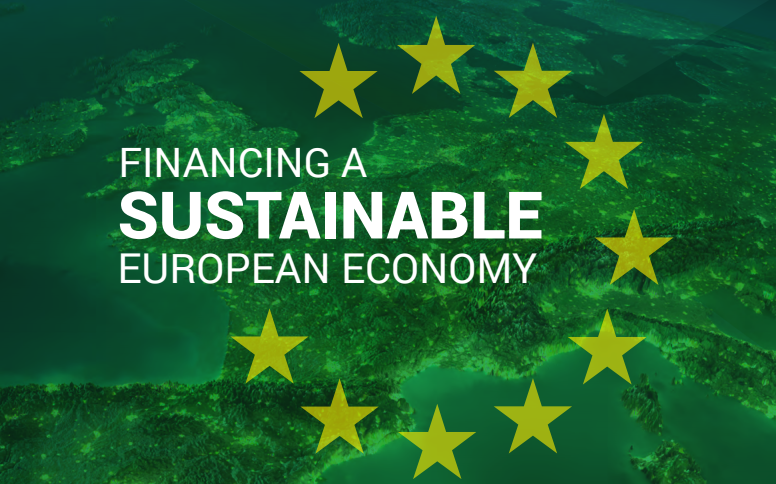The European Commission established the EU High-Level Group on Sustainable Finance (HLEG) to help develop an overarching and comprehensive EU roadmap on sustainable finance. It requested advice on how to ‘steer the flow of capital towards sustainable investments; identify steps that financial institutions and supervisors should take to protect the financial system from sustainability risks; and deploy these policies on a pan-European scale’.
Given the complexity of the financial system and its policy and regulatory framework, there is no single lever to achieve these ambitions and ‘switch’ the financial system to sustainability. Improving the contribution of the financial system to sustainable and inclusive growth requires a comprehensive review, the identification of areas where changes are needed, and the development of specific recommendations in these areas. That is what the HLEG has sought to deliver.
As priority actions, the HLEG recommends: establishing an EU sustainability taxonomy, starting with climate mitigation, to define areas where investments are needed most; clarifying investor duties to extend the time horizons of investment and bring greater focus on environmental, social and governance (ESG) factors into investment decisions; upgrading disclosures to make sustainability opportunities and risks transparent; enabling retail investors to invest in sustainable finance opportunities; developing official European sustainability standards for some financial assets, starting with green bonds; establishing ‘Sustainable Infrastructure Europe’ to deploy development capacity in EU member states for infrastructure necessary for a more sustainable economy; and integrating sustainability firmly in the governance of financial institutions as well as in financial supervision.
The HLEG also makes some cross-cutting recommendations. It advises the EU: to confront short-termism in financial markets so as to reduce its negative impact on long-term corporate investment and development; to consider ways to empower citizens to engage with sustainable finance; to monitor investment plans and delivery through a dedicated EU observatory on sustainable finance; to improve financial market benchmark transparency and guidance; to ensure that EU accounting rules do not unduly discourage long-term investment; to establish a ‘Think Sustainability First’ principle at the heart of EU policy-making; and to drive sustainable finance at the global level.
The HLEG also has recommendations for specific sectors of the financial system. Their purpose is: to promote real economy and sustainability lending in the banking sector; to enable insurance companies to have a stronger role in equity, long-term and infrastructure investments; to ensure that asset managers, pension funds and investment consultants grasp the sustainability preferences of their clients; to ensure that credit rating agencies lengthen the time horizon of risk analysis and disclose how they consider ESG factors; to have listing authorities promote disclosure of ESG information; and to obtain better long-term research by investment banks.
Finally, the HLEG is aware that there are many other social and environmental challenges to tackle. The HLEG recommends: supporting the growth of social enterprises and the financing of social-related projects; revaluing natural and environmental capital in economic and financial decisions; and re-orienting agriculture to a way that is more sustainable for the economy, the environment and public health.
The Group’s recommendations in this final report aim to inspire and guide the Commission’s action plan on sustainable finance. The art of implementation will be to not increase the overall regulatory burden and complexity, given that the ultimate purpose is to facilitate more investment. And the ultimate test of the HLEG will not just be the degree to which its recommendations are adopted, but the extent to which sustainable finance becomes a permanent feature of European markets and policy-making. The HLEG hopes to stimulate a wide public debate that helps shift Europe’s financial system from post-crisis stabilisation to supporting long-term growth.

